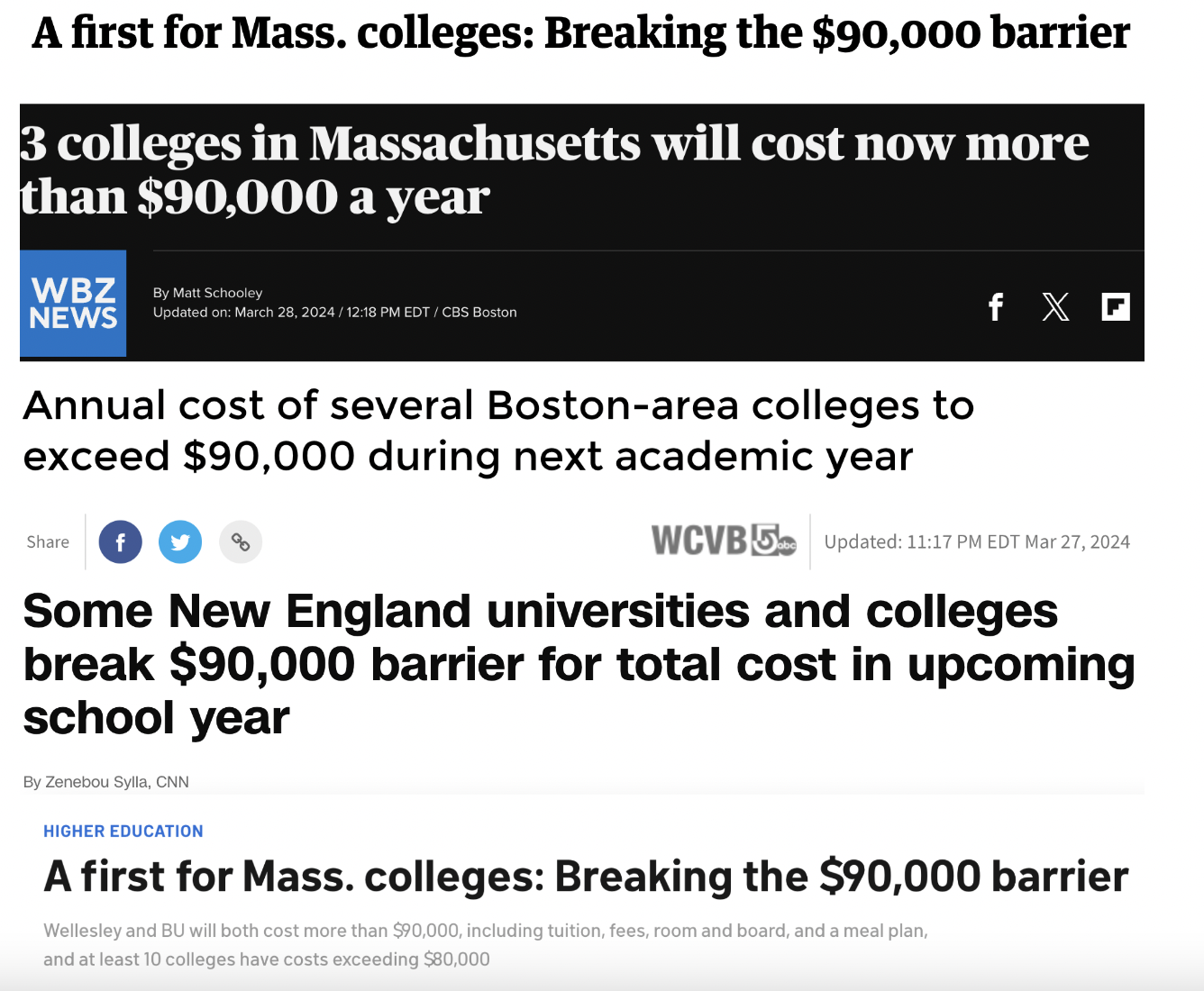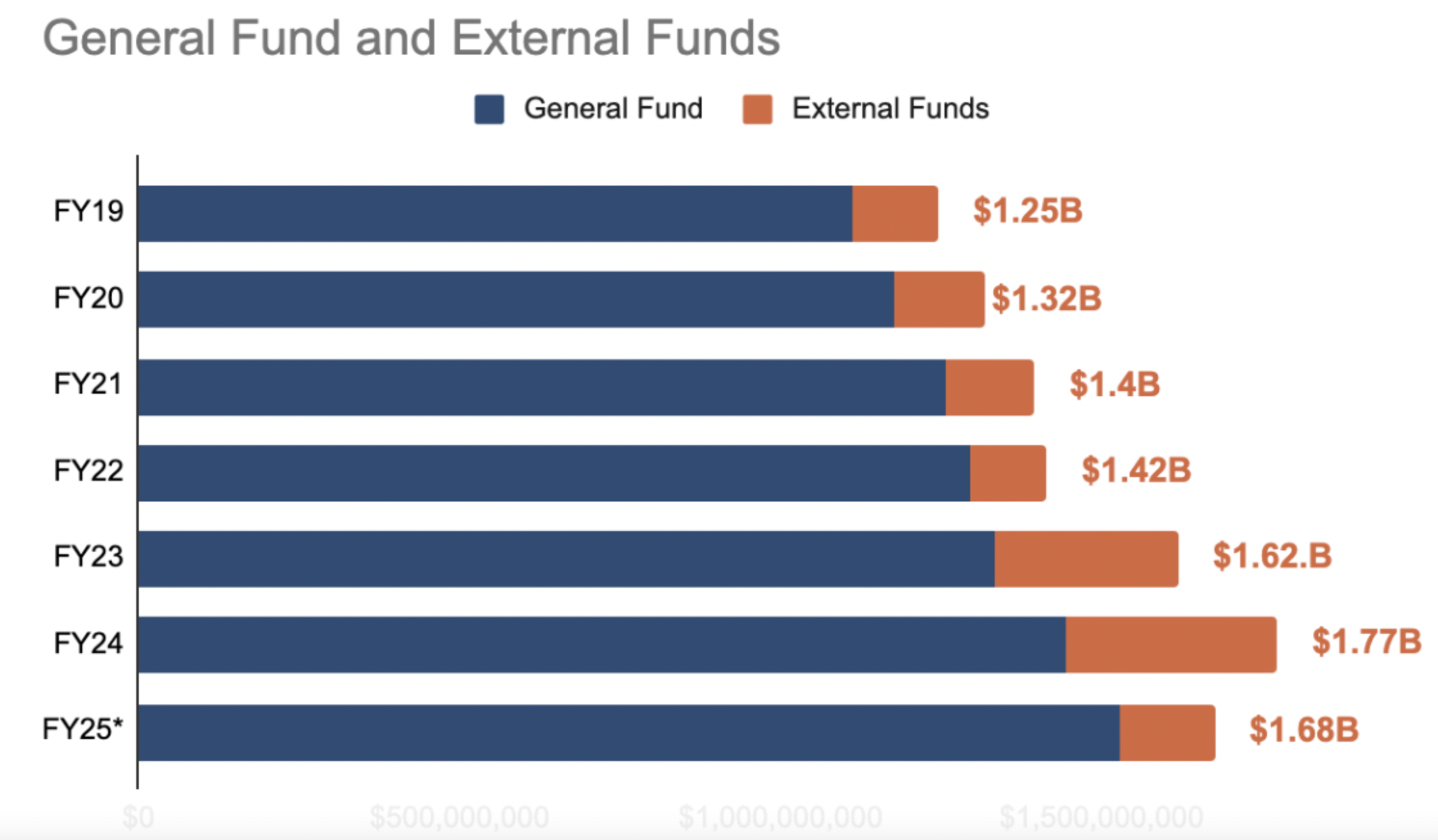FYI from BSF, 3.29.24
Very little elicits more indignance in Boston than a price that seems too high.
The news that local colleges were officially charging $90,000/year garnered predictable headlines and reactions.
Should this be a surprise?
Anyone who took Economics 101 can easily answer the following question. What happens to a price for a good for which there is:
limited supply (enrollment in top colleges is effectively capped),
government subsidies, and
Answer: the price never goes down.
The reality is that competitive colleges are actually affordable.
When you account for the size of the market.
There are ~3.8 million high school seniors right now in America. The top 25 colleges and universities will offer approximately ~73,000 seats. That equates to less than 2% of all students.
$90,000/year is a very affordable price for American families in the top 2% for wealth. And this doesn’t account for the full-tuition dollars brought to bear from students applying from abroad.
Unlike the other 98%, for this small slice of higher education a non-functional FAFSA doesn’t matter. The students being enrolled can afford to go, due to family wealth or university endowments that value their potential contributions in academics and activities. Other colleges and universities follow the market, and their tuition prices rise as well.
Like too many things in our politics and culture, getting mad is easy, but it doesn’t actually solve the problem. There is no reason any of this will change, absent some sort of government intervention.
There was a different sort of sticker shock with the $1.5B+ Boston Public Schools budget, approved by the Boston School Committee on Wednesday (full materials here).
The BPS budget presents a more complex set of econ questions. As we laid out last month:
How does a budget decrease and increase at the same time?
2. How does staff decrease and increase at the same time?
3. Why is more funding not leading to more resources at schools?
Despite an increase $414M in city funds over the past five years, each budget year features schools that require millions of additional dollars to run their basic programs and other schools that must prepare for staffing and program cuts.
There are only two possible answers: a lot more money or a lot lower costs.
Like too many things in our politics and culture, getting mad is easy, but it doesn’t actually solve the problem. There is no reason any of this will change, absent some sort of government intervention.
notes in the margin
With a judge ruling demolition may commence, future Boston Public School students will have access to a renovated White Stadium.
The City of Boston has centralized all age 0-5 care and school options in one place, Great Starts.
Brockton High, from the student perspective.
Who knew this still happened at a Massachusetts school?
Holyoke is leaving state receivership.
Massachusetts released a new data dashboard on chronic absenteeism.
What continues to drive this phenomenon? Turns out, kids are sick more, and many families are not fully aware of children’s attendance issues.
Indiana is the most recent state to ban student cell phone use in school.
Nationally, teachers are contending with layoffs and declining salaries.
The school districts with the most federal ESSER dollars also experienced significant enrollment decline.
Some examples of how schools, districts, and states effectively used federal ESSER dollars.











